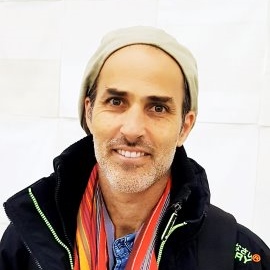click to dowload our latest edition
CLICK HERE TO SUBSCRIBE TO OUR NEWSLETTER


Published
5 years agoon
By
adminRABBI GREG ALEXANDER
That’s just in the shops – what about neighbours who are putting up ever-more elaborate Christmas displays in their gardens, and on their roofs, with full-sized Santas and reindeer? And snow scenes – in the December heat!
So what are Jews doing? We are sitting at home around a little chanukiah, lighting candles! Hardly a comparative act! Or is it? I think that the powerful symbolism of these little lights has significance that is not fully appreciated until we see it in its full history.
First, let’s find out more about this little chanukiah. Some people call it a menorah, some a chanukiah – so which is it? Well, the menorah was a spectacular golden candelabra that graced the Temples (both of them) until the Second Temple was destroyed by the Romans in 70CE. And it has not been seen since, although there are lots of theories as to where you can find it today – think Indiana Jones and the Raiders of the Lost Ark. But there is one important difference between the menorah and the chanukiah. The menorah had seven branches, the chanukiah has nine. Why?
Well, going back a couple centuries before the Romans, the Maccabees revolted against their Hellenistic oppressors, and succeeded in rededicating the Temple from a shrine to Zeus to its original purpose. Only, they needed oil for the menorah to last eight days, and had enough only for one. They lit it anyway, and a miracle occurred – it lasted eight days! That’s the reason for the eight branches, plus one for the shamash – the helper candle.
Only, in talmudic times, they didn’t have candles. They had little oil lamps, and they just lined them up. In medieval Europe, they used a star-shaped oil lamp for Shabbat and Chanukah called a Judenstern (Jewish star) with eight separate compartments. The shamash originally wasn’t a candle for lighting, it was a separate lamp for giving light. You see, you can’t use the light of the Chanukah candles to see by, so you needed another source of light (that was before electric lights, duh!).
Only in the 16th century did they switch to wax candles, and so evolved the modern chanukiah. Only then did the shamash start to have the fixed place on the candelabra you see today. That’s when the modern chanukiah came into its own – a portable metal, wood, or clay candelabra that had the shape of a tree of life, and worked perfectly.
Let’s see the deeper meaning of this mitzvah. Ostensibly, it’s to remember the miracle of the oil. And what better time in the world to think of miracles? In South Africa, Chanukah falls in the middle of summer, but in Israel, this is the darkest, coldest part of winter. And Chanukah always falls over the new moon of Tevet, which is the darkest part of the month. So, in the dark of night, in the darkest part of the month, in the darkest part of the year, it’s no wonder that it’s a great time to light lights and eat oily comfort food! The light not only reminds us of the miracle of the oil, but also of the need to light a candle in darkness.
The number eight symbolises infinity – G-d created the world in six days, the seventh was completion and rest, so eight is seven plus one. More than complete, it symbolises eternity and infinity. Why so? I mean, oil lasting for a few extra days is a cool miracle, but what does it have to do with infinity?
Perhaps the miracle is not the oil lasting eight days, but the fact that the Maccabees had the faith and courage – even the chutzpah – to light the menorah at all. They had infinite faith that there just HAD to be a miracle. Perhaps miracles happen every day. Jewish tradition urges us to seek the miracles hidden in plain sight.
Chanukah teaches us that it’s not just light that brings salvation, but darkness too. We should not think that just because we are having a hard time, that life seems dark, that we have been abandoned, and there is no hope. In the biblical account of creation, G-d does not eradicate darkness when light is created. Rather, darkness receives its place – night, and light its place – day. The interplay between light and darkness is key to understanding our physical and spiritual world.
This is a message that should give us hope in the darkest times. And, that’s why we need to do what’s called Pirsum Nes – we need to advertise this miracle. Our chanukiah should, ideally, be placed outside on the street or in the window overlooking the street, so we can share the message of courage and hope with the world.
South Africa is a land of extreme opposites – rich and poor, beauty and horror, kindness and brutality. It’s also a land of miracles. This December, let us add our chanukiah to the darkness that some feel out there, and know that we are the bringers of light, the agents of change, the ones who produce miracles. May we have a transformative year. Chag Urim Sameach!
